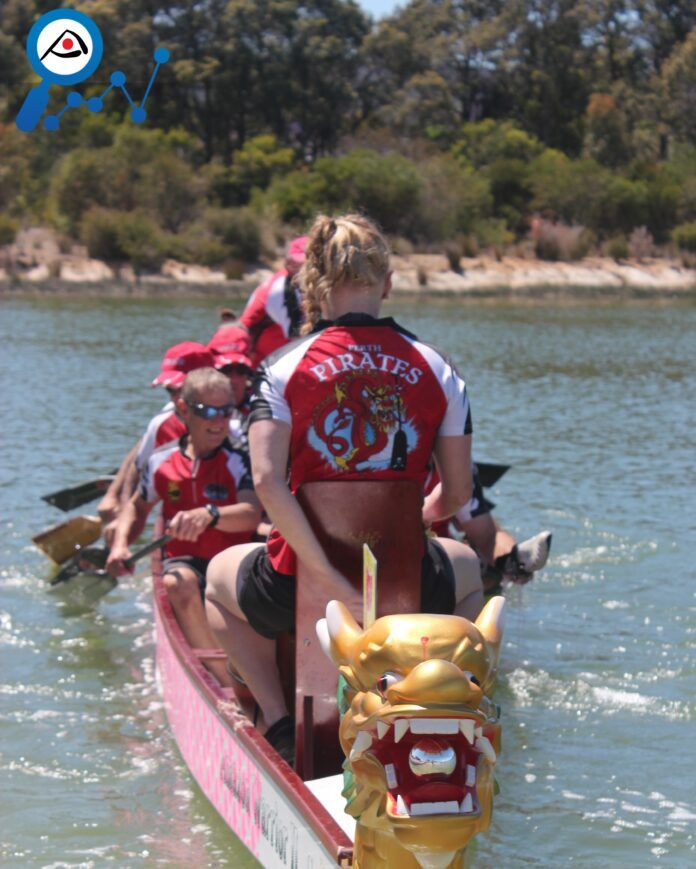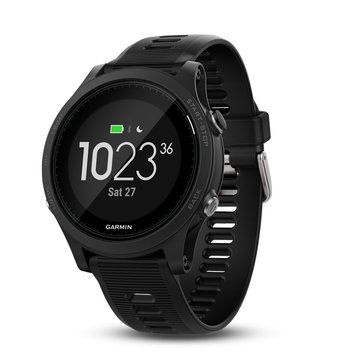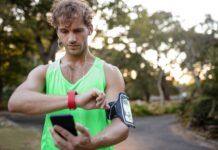It is the first Regatta of the season. A chance for teams to measure themselves under race conditions and see where they are at on their Dragon Boating journey.
In this post I will analyse one crew’s results and suggest some points they may wish to consider in order to hit a goal time for a 200m race of 50 seconds.
Hopefully, this will show the value of measuring performance and of my mantra “Do What You Can, With What You Have, Where You are”
Crew Profile
The profile of the crew and the race:
- A Mixed 10s crew with 5 men and 5 women paddlers.
- 3 heats of 200m racing.
- 3 of the men and 3 of the women are over 5’10” (178 cm)
- Over the last few seasons this crew has worked itself up from coming last in most races to now being in the mix.
- This season this club and one other has formed a combined sister club to allow the numbers required to race.
- I am one of the 5 men and this was our very first regatta/paddle together.
What Data Will We Analyse?
The source of the data for this post:
- I wore my Garmin 935 in every race. It was set to sample at one second intervals. It provides a whole suite of data but what I am interested in is: speed, stroke rate and stroke length.
- Taking into account that there was a fair amount of variability in each heat due to the fact it was the first regatta and the newness of the crew, I have taken the best run of the day as the one to analyse.
- The only other input I have taken is the official race time. (This is more accurate than trying to start and stop the Garmin under race conditions)
Assumptions
Here are the assumptions that I have made based on my own experiences:
- Taller and heavier paddlers perform better at slightly slower stroke rates.
- Shorter and smaller framed paddlers perform better at higher stroke rates.
- A recreational crew is usually made up of a mix of the above.
- For a recreational crew: It is better to work on getting stronger while fixing technique. Then start lifting the rate.
The Data
Race Distance: 200m
Crew: Recreational Mixed 10s
Race time: 58 seconds
Conditions: Calm. Temperature moderate.
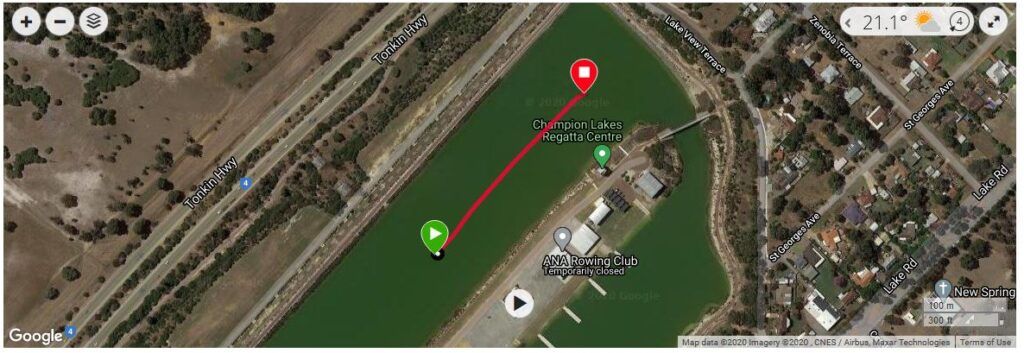
I uploaded the Garmin data into Garmin Connect and produced the following summary graph that contains:
- The crews speed over the distance
- The stroke rate over the race
- The distance per stroke over the race.

I will comment on the whole race and then breakdown the graph and comment on the race phases.
The Whole Race
I am a firm believer in getting to race pace quickly (within 70 meters) and holding that maximum speed for as long as possible – preferably for the whole race. So from a shape perspective, a race speed vs or distance graph should look like this:
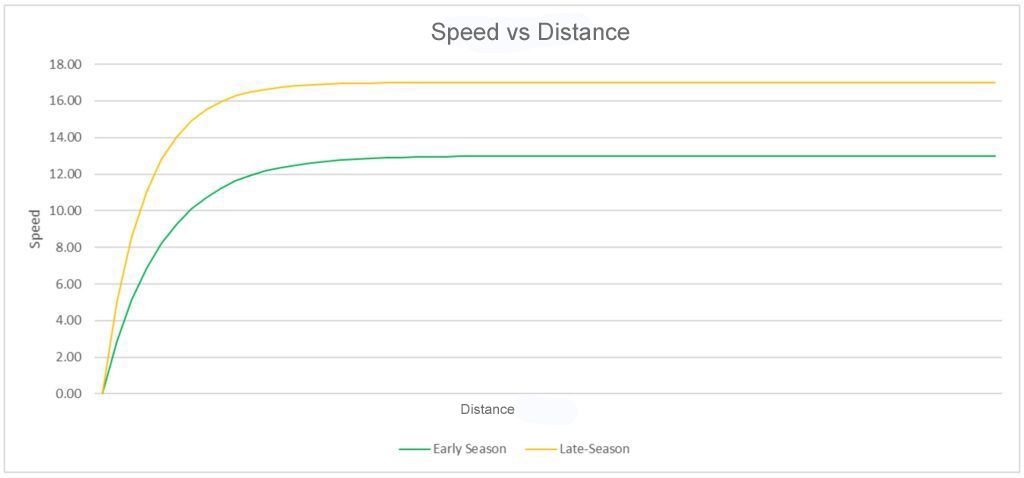
From the Garmin the actual race speed vs distance graph is:
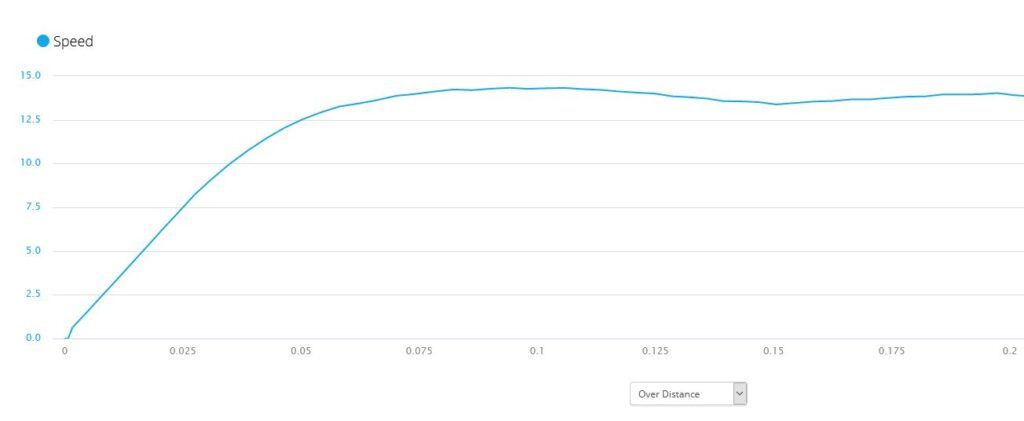
Comparing figures 3 and 4 shows that there is a lot of promise in this crew.
- The race start is linear.
- They hit a top speed of 14.3 kph
- They held their race pace to around the 110m mark
- Not a fan of the saddle back in the middle of the race and the “Hail Mary” finish at the end. I will explain why in a future post.
Let’s have a closer look at each phase.
The Race Start
I define the race start as the phase from when the starter says “Go” to when the crew hits top speed. For some crews their race start is the race start sequence. But I have had crews who are still accelerating after the have finished their race start sequence.
Some of the metrics I am looking for in a race start are:
- As high a top speed as the crew can achieve.
- A smooth, fast acceleration to that top speed.
- Hitting that top speed in the shortest distance. < 70m
So how did they fare?
Top Speed
They hit a top speed of 14.3 kph which is a good start.
The acceleration was pretty much linear at the start – not too many wobbles in the graph – which satisfies item 2 above.
However it took 90 metres to get to that top speed. That is what is killing their average speed. We need more acceleration in a shorter distance.
Stroke Rate
The stroke rate at the race start was all over the place as you can see from the graph.

The craziness early in the race start can be put down to the Garmin being influenced by impulses passing through the boat from paddlers being out of time (not to be unexpected in a brand new mixed crew but needs to be addressed). Surprisingly the acceleration of the boat was still linear and steady.
The crew eventually settled on a stroke rate between 80 and 84 spm.
So for the race start there are some top speed, acceleration and race start timing items on our list to work on.
The Rest of the Race
Here is where we can get some insight into this crew. I will present the graph with the race start removed (first 90m removed).

The interesting takeaway from this are there are 3 sections in Figure 6:
| Section | Speed (kph) | Stroke Rate (spm) | Distance per Stroke (m) |
|---|---|---|---|
| First Section | 14.1-14.3 | 80-81 | 2.8-2.98 |
| “Saddle Back” in the middle | 13.4-13.9 | 81-83 | 2.7-2.8 |
| “Hail Mary” Finish | 13.6-14 | 81-84 | 2.7-2.8 |
Where to from here?
Let’s set a goal time for this crew of 50 seconds for a 200m race. We have currently have a time of 58 seconds so we are looking for 8 seconds.
Now, where does this crew sit on the best tool for a dragon boat coach? I have created the calculator below based on the same engine that created the table in a previous post: Laying it All on the Table
Let’s enter:
- the current stroke length of 2.8 m,
- current stroke rate of 80 spm,
- a race distance of 200m,
- a target race time of 50 seconds and
- a goal to hit race pace in 70m.
From the results we can see that, with the inputs we have chosen, we need to:
- Average 14.4 kph (up from our current average speed of 12.4 kph)
- Hit a top speed of 16 kph (up from our current 14.3 kph)
- Extend our stroke length to 3.3m (up from 2.8m)
That all looks quite daunting but let’s put together a plan to get there.
Firstly look at the “Rates and Lengths”results table. This table gives different options to achieve the same race time. For example you could up the rate to 85 spm and then only require a stroke length of 3.1 m. Or you could go the other way and lower the stroke rate to say 70 spm but then require a stroke length of 3.8 m.
What should the plan be for this particular crew?
Firstly, 3 of 5 men in the crew are all tall and this was their first time with this crew. That means the, settled on, 80 spm was a rate determined to be optimal BEFORE 3 additional tall dudes entered the fray. This is important.
To get to that speed of 16 kph and hence the 50 second 200 m, we have three options:
- Lower the stroke rate to 78 spm and lengthen the stroke to 3.4 m with strength and power exercises.
- Keep the stroke rate at 80 spm and lengthen the stroke to 3.3 m with strength and power exercises
- Lift the stroke rate to 85 spm and keep the stroke length at 3.1 m with lots of cardio work.
Note: We could go for any stroke rate as long as we can hit the corresponding stroke length numbers. I have just selected the 3 most realistic options.
Which one should this crew select? Taking my assumptions from the start of this post into account, I would not lift the stroke rate higher. I believe we would lose the taller and heavier paddlers at the higher stroke rate. So Option 3, increasing the stroke rate to 85 spm is out.
Option 2 seems appealing because it is such an incremental improvement in stroke length (2.8 to 3.3m). And there would be nothing wrong in selecting that one and training for it.
However, the data would encourage me to look very closely at Option 1 first.
Why?
Firstly, look closely at the copy of Table 1 below.
| Section | Speed (kph) | Stroke Rate (spm) | Distance per Stroke (m) |
|---|---|---|---|
| First Section | 14.1-14.3 | 80-81 | 2.8-2.98 |
| “Saddle Back” in the middle | 13.4-13.9 | 81-83 | 2.7-2.8 |
| “Hail Mary” Finish | 13.6-14 | 81-84 | 2.7-2.8 |
The First Section after the race start had the fastest speed, lowest stroke rate and longest stroke length (2.98 m). As soon as the stroke rate started to go above 81 spm in the other stages, the speed suffered and the distance per stroke lessened.
Secondly, consider that by chance, the current stroke rate (80 spm) is marginally too high. This may result in losing some of the potential power from the taller, larger framed paddlers.
Finally, remember my assumption that taller, larger framed paddlers prefer lower stroke rates, and that this crew has 6 of the ten paddlers falling into that group.
Dropping the rate to 78 spm may be closer to the sweet spot for the taller paddlers and one may find that the 3.4m (or EVEN MORE) stroke length may already be there!
Look at the stroke length for the first section in Table 1. They touched on 14.3 kpm at a stroke length of 2.98 m and a stroke rate of 80 spm but couldn’t hold it there. I believe the taller, heavier paddlers just could not keep up with the high stroke rate (80 spm). That said, they got there, even though fleetingly. Drop the rate ever so slightly and they may be able to hold that speed for longer.
Since going above 80 spm is not the answer, maybe somewhere below 80 is. I would experiment with a stroke rate of 78 with this crew . And “Yes”, something as small as a 2 stroke per minute change can make a huge difference. Check out The Perth Pirates crew (in Red) who dropped their rate by 2 strokes per minute and moved from consistent 3rds and 4ths to this Gold medal performance in the State Championships. Compare their stroke rate with the team in the foreground who came second. The Pirate Women were STRONG women where a slower rate and longer stroke length was their sweet spot.
Summary
Gathering data is critical to planning for your crews. There are always hidden gems in the data.
I firmly believe this recreational crew has the potential to medal this season if the right training strategy is adopted.
So the plan is:
Lower the stroke rate to 78 spm and lengthen the stroke to 3.4 m with strength and power exercises.
I would suggest that this team add the following to their training program:
- Get 1 x sports watch (e.g. Garmin 935) and record every session.
- Do some practice runs on water at 76 spm, 78 spm & 80 spm and compare boat speed. (Graph it)
- Practice race starts with gear changes and graph each one to find the one that gives the steepest and smoothest acceleration. (e.g. “5-15”; “5,5,5,5”; “4 and 20”, “3-10-20”)
- With race starts, aim to hit top speed within 70m
- Practice with a sea anchor to build up strength and technique.
Feel free to use the calculator above to do your own “what ifs”. Crunch the numbers. Make a plan. You may be closer to victory than you think.



